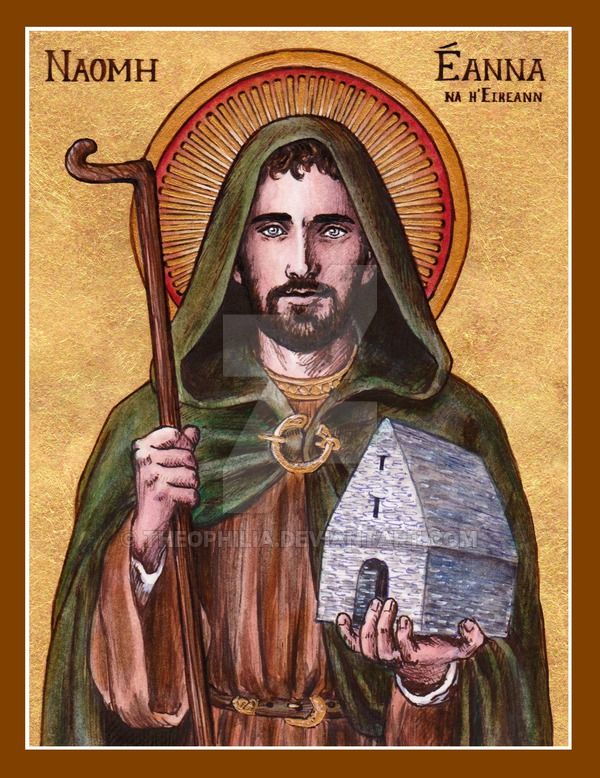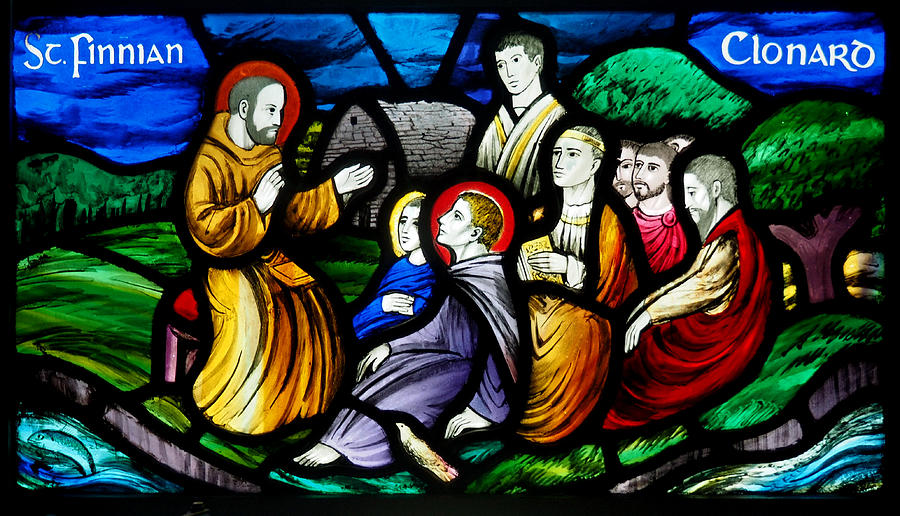
Image taken from AnaStpaul
Material distilled from Omnium Sanctorum Hiberniae and Catholicireland.net
”Teaghlach Éinne” is the name of an old monastic ruin on the Aran islands, off the coast of Galway. The name means “the household of Enda. Now St. Enda of Aran is believed to be buried here, either under the altar or close by in the chapel interior.
St. Enda (or Éanna, Éinne or Endeus), was the succeeding warrior king of Oriel in Ulster, in the 5th and 6th centuries AD. His father was King Conall Dearg of Oriel which is in south and mid-Ulster today. The reigning king Enda successfully defended the territoty of Oriel against raids from neighbouring clans. On his return from once such successful battle, he passed by the monastic community of his sister Fanchea. There, Enda was attracted to one of consecrated young virgins. But the abbess Fanchea persuaded Enda to renounce his worldly ways and pursue the religious life. Enda thus decided to embrace the monastic life. He became a student at St Ailbe’s monastery at Emly. He later studied at Ninian’s Candida Casa in Scotland. He also would have travelled to Rome for a time.
Foundation on Inis Mór, Aran Islands
On his return to Ireland, Enda settled on the lonely Aran islands to build and develop his monastic life. He founded a monastery of ”Teaghlach Éinne” at Killeany (Cill Éanna) on Inishmore, which is the bigger of the three Aran islands on the west coast of Ireland. Edna received the lands on Inis Mór (Inishmore), from his relative, King Áengus of Munster. Edna also established other monastic sites on the island, creating a spiritual centre of learning that attracted many pilgrims and scholars from further afield. Some noteable students that came to the island were Colman of Kilmacduagh, Ciarán of Clonmacnoise, Jarlath of Tuam, and Carthage, who later built monasteries at Lismore. Enda’s reputation grew widespread and even Brendan the Navigator got his blessing before he set sail to the new world (mentioned in the Navigatio Sancti Brendani).
The ruin at Teaghlach Éinne, is believed to have been originally built around the 8th or 9th century. It is a simple stone structure with a round-headed doorway. The chapel has altars and several stone slabs with carved Gaelic inscriptions. The cemetery contains the graves of some of St. Enda’s disciples.
Teaghlach Éinne is amongst the oldest and intact examples of early Irish monastic architecture. The monastic chapel reflects the influence of Romanesque and Celtic styles. This monastic site represents the legacy of St. Enda and his monks. These monks contributed to the preservation and dissemination of knowledge, culture and faith in Ireland and beyond during the Dark Ages. Because of his many disciples, Enda along with Finnian of Clonard are regarded as the patriarchs of Irish monasticism.
The church celebrates his memory on the 21st March
